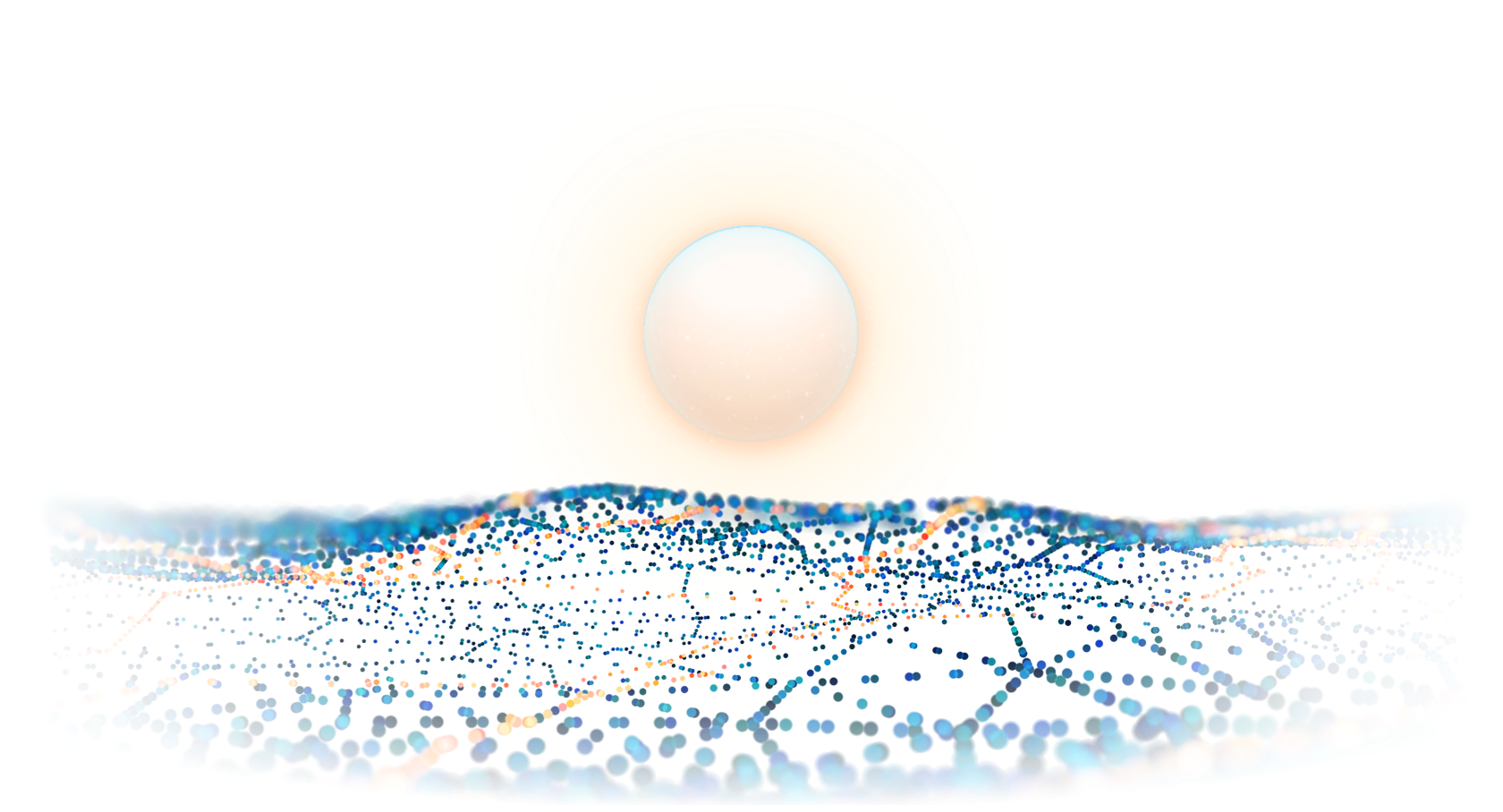

Introducing The Graph Council
This is part two of a blog series describing The Graph’s governance. The first part discussed The Graph Foundation and can be found .
Three weeks ago, it was announced that The Graph Foundation was formed to help steward The Graph into the future. Today we’ll go in-depth about the plans for decentralizing protocol and ecosystem governance and the role of The Graph Council.
The Graph is a core protocol for Web3, enabling the efficient querying of blockchain data in a decentralized market, and is already relied on by some of the in this space to the tune of . The mandate of The Graph Council will be to make sure The Graph continues to be a stable foundation for applications that are designed to run forever, while also fulfilling The Graph’s vision of becoming a global open API layer for decentralized data.
When The Graph’s decentralized network launches, it will be governed by The Graph Council. This council will be a 6-of-10 multisig that balances the interests of five core stakeholder groups: Indexers, active token holders, the initial team, users and technical domain experts.
As the protocol matures, The Graph’s governance will decentralize further, following in the footsteps of projects like Compound, MakerDAO and Livepeer, which have taken a similar path. For example, a future evolution of The Graph Council could be to replace individual members with nested multsigs or DAOs, allowing core interest groups to have meta-governance so more stakeholders can participate.
In addition to technical governance, The Graph Council will govern over The Graph Foundation community grants from the foundation’s . As described in , The Graph Foundation will also be accountable to The Graph Council, both legally and financially.
The Graph Council will carry out its mandate to oversee several core functions:
- The Graph Foundation Operations
- Grants and Ecosystem Funding
- Protocol Upgrades
- Protocol Parameterization
- Emergency Protocol Operations
Importantly, The Graph Council is a starting point, not an end state. We expect it to be the seed of an evolving institution. We opted for a simple and elegant solution that was equipped to handle our short to medium-term goals of bootstrapping the network in a way that is also aligned with our long term philosophy and design principles around protocol governance.

Governing Public Infrastructure
In designing crypto protocols, we are building public infrastructure—the roads and bridges of our new digital society. These provide a firm bedrock for the future of life and work: neutral platforms that unleash a host of new innovations and economic opportunities, while being outside the control of rent-seeking gatekeepers.
This view is a significant departure from how such platforms have traditionally been governed: through the lens of shareholder capitalism. This outlook was famously championed by the economist Milton Friedman’s in a :
“…there is one and only one social responsibility of business—to use its resources and engage in activities designed to increase its profits so long as it stays within the rules of the game, which is to say, engages in open and free competition without deception fraud.”
Friedman saw social responsibility as the purview of democratic governments but that executives of companies had an ethical obligation to maximize value for the people paying them—the shareholders.
This viewpoint had its vogue but feels antiquated in our modern world where the distinction between the role of private enterprise and social institutions has blurred.
Technology has precipitated winner-take-all markets dominated by tech monopolies, the largest of which have the economic and geopolitical clout of nation states.
Innovations from private entrepreneurs start as novelties and transcend to in a matter of years.
Simultaneously, our democratic institutions are weaker than they’ve ever been. , and have undermined governments’ abilities to perform its function as arbiters of fair and competitive markets.
In this vacuum of oversight, we’ve seen companies put shareholder value ahead of the , the , , and our , just to name a few.
To be fair, at the time it was thought the only realistic alternative to maximizing shareholder value was pure socialism. Friedman again:
“…the doctrine of “social responsibility” taken seriously would extend the scope of the political mechanism to every human activity. It does not differ in philosophy from the most explicitly collectivist doctrine. It differs only by professing to believe that collectivist ends can be attained without collectivist means.”
When the above was written, computers were in their nascency, consumer internet was decades away and the notion of a global trustless compute layer that could enforce automated rules between various stakeholder groups would have been pure science fiction.
But now, with blockchain and decentralized technologies, we have the tools to design systems that enfranchise a larger group of stakeholders—and we have a moral responsibility to do so.
Not just to mitigate the excesses of the pure profit motive, but because we are increasingly active contributors to the products and services that we use most often: What is a social network without friends? What is a note taking app without the years of notes you added to it? What is a ridesharing app without the drivers or a vacation rental platform without the hosts?
In governing public infrastructure, we are protecting all of our shared investment of time, money and resources into a substrate for collective economic empowerment.
Design Principles
Let’s distill the above into a set of actionable design principles.
Maximize Stakeholder Value
The protocol should be governed to maximize value to all stakeholders, including those who do not hold Graph Tokens, such as end-users that may rely on The Graph for access to critical financial services. The protocol should not be governed according to plutocratic interests.
Antifragility
Governance should prioritize the long term robustness of the network over short-term economic gains to any stakeholder group. Furthermore, governance should monitor the health of the network and vote on improvements in response to any adverse emergent behavior or external shocks. In this way the network will become more resilient over time.
No Zero Sum Games
The Graph’s governance should not intentionally reward one stakeholder group at the expense of another. It especially should not reward the participants in the governance process at the expense of the rest of the network. Friedman’s fear of politics in “every human activity” was well-founded, as politics often collapses to a zero-sum game between partisans interests. While The Graph’s protocol governance should enable stakeholder groups to advocate for their own interests, the overall mechanism should encourage governance actions which prioritize the collective well-being of the network.
Progressive Decentralization
The Graph’s protocol governance should enfranchise an increasing group of stakeholders, while being robust to the fact that not all stakeholders are subject-matter experts or have the time and inclination to engage actively. Governance should start with a small group of stakeholders to move quickly and decisively in the early days and expand that group as the protocol matures from rapid iteration to slower, less frequent upgrades and parameterizations.
Progressive Minimization
In order for progressive decentralization to not invite politicization of the process, zero-sum games and regulatory capture, it’s essential that The Graph’s governance minimizes its role over time—eliminating it altogether if at all possible. This would be a multi-year, or even multi-decade process, in which The Graph achieves feature completeness, the smart contracts are sufficiently battle-tested, and the economics of the system are sufficiently well-understood that important parameterization and monetary policy decisions can be fully automated.
Security
The governance mechanism should be secure, and also have procedures in place for securing user funds in the event of an unforeseen bug or economic attack. Given that the protocol will have many millions of dollars in value flowing through it, this is absolutely essential.
Transparency
The governance process must be transparent. The process by which proposals are made to improve the protocol should be open and permissionless, and the meetings to discuss these proposals should be open to the public. This is especially important during the early stages of the protocol when governance consists of a smaller group of stakeholders.
.png)
Graph Council Multisig
Given our requirements, we decided to start with a simple multisig that balances the major competing interest groups and expertises that we’ve identified in the system. In addition to meeting the criteria outlined above, there are a few obvious benefits to this approach:
- Simplicity and security
- All stakeholders are represented
- Flexibility
We’ve chosen the Gnosis Safe Multisig which has been formally verified and audited rather than rolling our own governance contract. With the 6-of-10 scheme we can represent the major stakeholder groups while providing enough checks and balances that the interests of one group don’t take priority over the welfare of the entire system.
Finally, with a smaller group in The Graph Council at first, governance will be able to move fast and decisively in making improvements to the protocol, while being flexible to expanding participation at any future time.
In the future, we could upgrade to a more custom multisig that lets each stakeholder group have its own respective governance process, such as a DAO or another multisig, that rolls up to the top-level council. This would provide a path for enfranchising more participants in the process, while keeping the same balance of power between stakeholders at the top level.
Why not token voting or rough consensus? While the token voting may play a role in a future version of governance, in its simplest form used today it is , has and only enfranchises a single type of stakeholder. There are promising ideas to improve token voting, such as voting and , but this is an active area of research and experimentation.
On the other end of the spectrum, we have rough consensus, and , where protocol improvements are made via hard fork. Rough consensus does not formally prioritize any stakeholder group, because it does not really formalize any strict notion of consensus in the first place. This process increases the coordination costs of performing upgrades, and could be a good fit for The Graph as the protocol matures, but is counter to the goal of iterating quickly and decisively in the early days.
Stakeholder Roles and Incentives
Let’s take a look at the stakeholder groups we’ve identified, what expertise they bring to the table and what natural incentives they might have.
1. Indexers - Indexers advocate for their own interests as the service providers in The Graph. Their primary incentive is to increase the query fees and indexer rewards they can earn in the network, thus they are driven to grow query volume and ensure subgraph uptime. Additionally, many Indexers—especially the early adopters—are mission-aligned.
2. Active Token Holders - Active token holders are financial stakeholders who participate in making the protocol better, either through governance, as Delegators or as Curators. They are both financially incentivized and mission-aligned.
3. Users - Users include dApp developers, subgraph developers and dApp end users and can advocate for their own interests. Many of these stakeholders participate in the protocol as Curators. They want to see The Graph become the best version of itself while protecting their existing investment of time and money in building on The Graph.
4. Technical Domain Experts - Technical domain experts include cryptographers, economists, engineers and other domain experts who are equipped to evaluate the correctness of future upgrades to the protocol. They would also help The Graph Foundation issue grants that are effective in furthering progress of research that is beneficial to The Graph’s ecosystem. Many of these domain experts will receive token grants which financially align their interests with the protocol, but they are also intrinsically motivated to see The Graph put many ideas and technologies into production for the first time.
5. Initial Team - The initial team can advocate for the original vision of The Graph and also provide operational and technical expertise. The primary incentive is mission alignment—for many of us, this is our life’s work. Many of the early contributors are also financially aligned as token holders.
Governance Functions
There are three main buckets of responsibilities for The Graph Council:
Protocol Operations
The council will be responsible for deciding on protocol upgrades and parameterization. It will also delegate the ability to pause or stop the protocol in the event of an emergency, in which case restarting the protocol with a bug fix would require the actions of the entire council.
Ecosystem Funding
The council will issue grants from the treasury to support The Graph’s ecosystem, including dApps building on The Graph, tooling such as state channel wallets that make The Graph more useful and research such as zero knowledge proofs which are relevant to future protocol upgrades. The council will also help structure proposals for quadratic funding so that the community can also express its preference for grant issuing with matching from the treasury.
Foundation Management
The Graph Council will have the power to vote on proposals that are legally binding for The Graph Foundation, as well as release funds from the treasury for budgets that are proposed for the foundation operations.

Looking Forward
There are many exciting opportunities for improving The Graph in the future, whether it be supporting multiple blockchains or verifying query results using zero-knowledge proofs, and much more. Even in its current state, The Graph is already mission critical infrastructure for numerous projects. We believe with The Graph Council we have a minimum viable governance mechanism to navigate the opportunities for growth and the responsibility of protecting the stability of a critical layer in the decentralized web.
When the protocol launches on mainnet later this year, we will be taking a step back as the sole shepherds of the protocol, and transitioning into active participants in a decentralized governance process. This has always been the vision for The Graph since our back in 2018 where we laid out our vision for progressive decentralization. Even after we hand over the reins we expect this process to continue.
In our nearly two years operating The Graph’s hosted service we have been blown away by what subgraph developers have built and more recently had similar reactions to the creativity and contributions brought by 200+ Indexers in our testnet and 2,000+ Curators. We’re looking forward to seeing this community continue to thrive and grow and believe the protocol is in good hands as it transitions into this next phase.
About The Graph
is the leading indexing and query protocol powering the decentralized internet. Since launching in 2018, it has empowered tens of thousands of developers to effortlessly build and leverage across countless blockchains, including Ethereum, Solana, Arbitrum, Optimism, Base, Polygon, Celo, Soneium, and Avalanche. With powerful tools like Substreams and Token API, The Graph delivers high-performance, real-time access to onchain data. From low-latency indexing to rapid token data, it serves as the premier solution for building composable, data drive dapps.
Discover more about how The Graph is shaping the future of decentralized physical infrastructure networks (DePIN) and stay connected with the community. Follow The Graph on , , , , , and . Join the community on The Graph’s , join technical discussions on The Graph’s .
oversees The Graph Network. , , , and are five of the many organizations within The Graph ecosystem.
